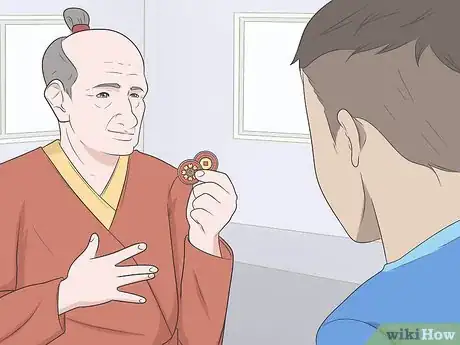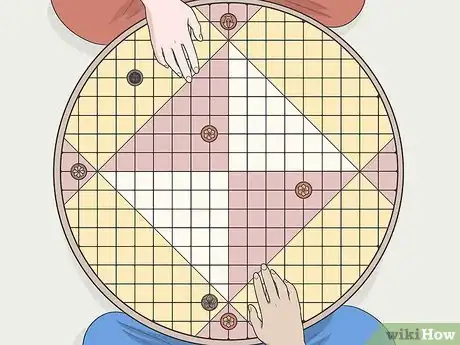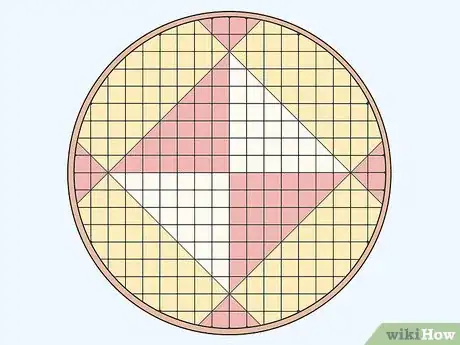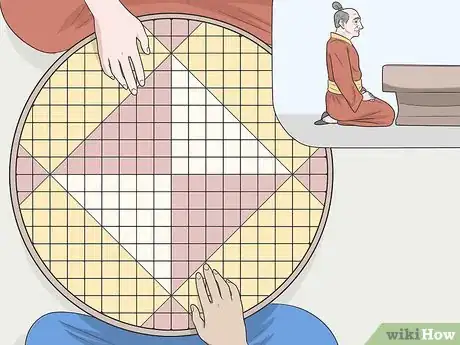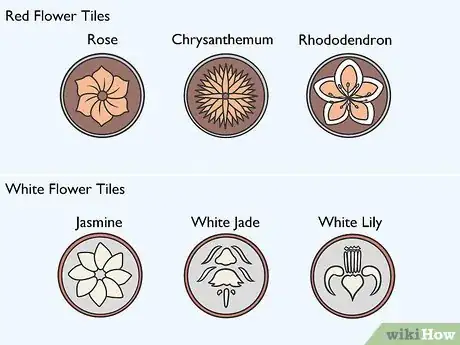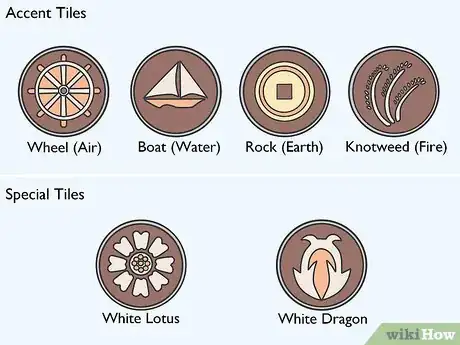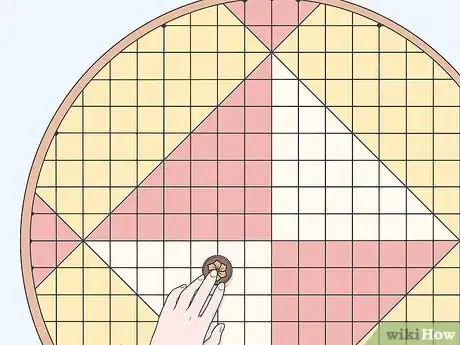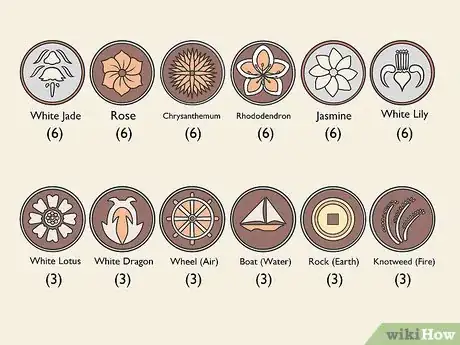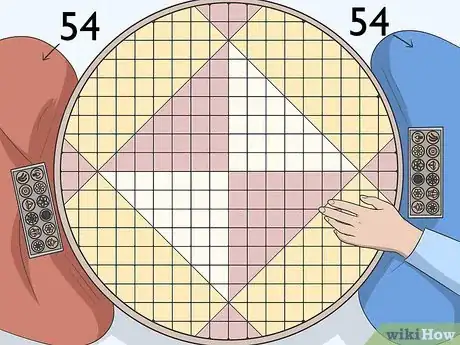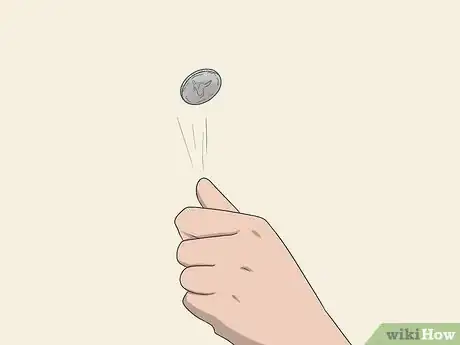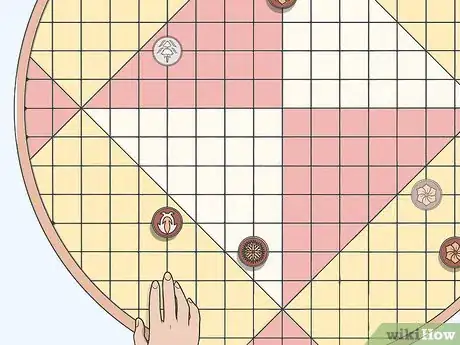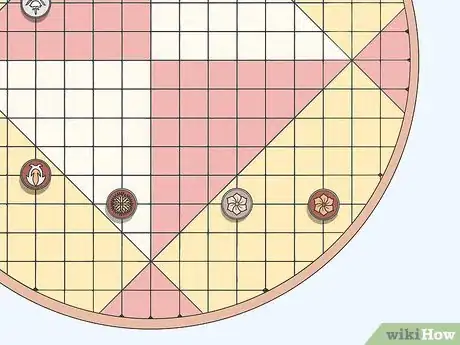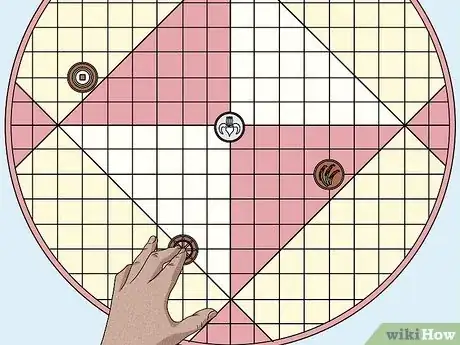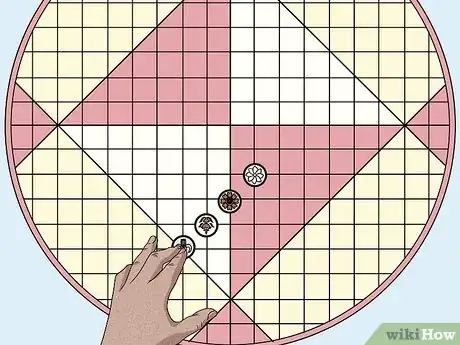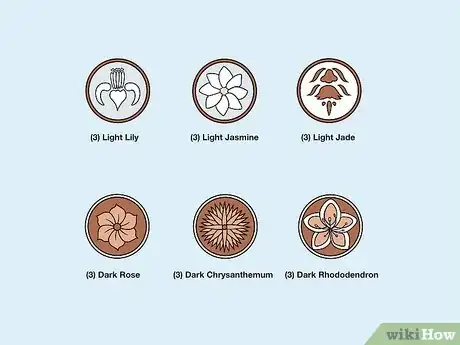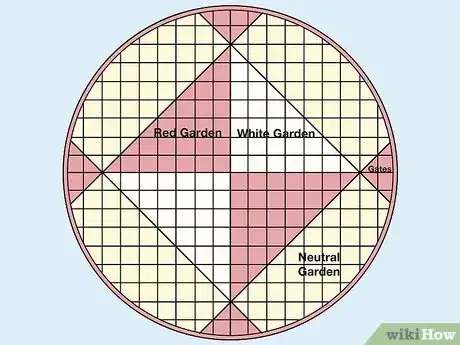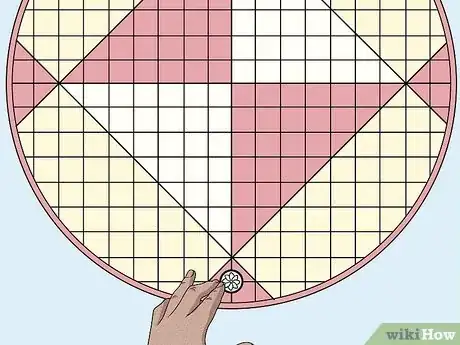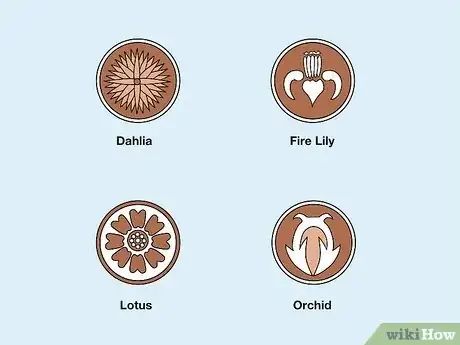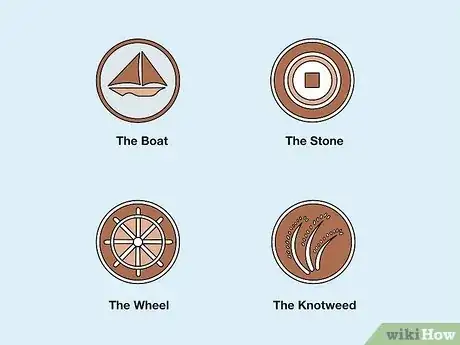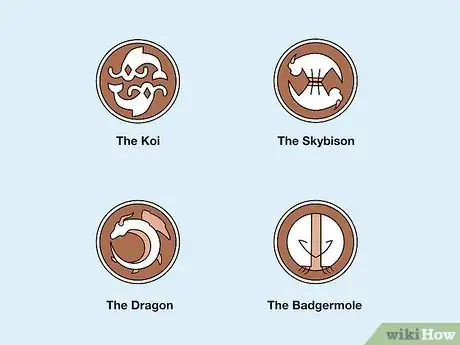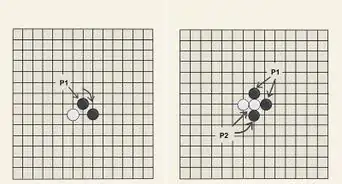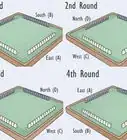This article was co-authored by Jessie Davidson. Jessie Davidson is a Child Care Specialist and the CEO and Founder of BabysitPro, which provides online courses for current and aspiring babysitters. Jessie has over 20 years of childcare experience and specializes in best practices for sitters of infants, toddlers, preschoolers, and grade-schoolers. BabysitPro’s courses are unique and age-specific so babysitters can learn detailed information relevant to the children they babysit. Jessie holds a BA in French Studies from Wheaton College and an MA in Visual Anthropology from The University of Southern California.
There are 9 references cited in this article, which can be found at the bottom of the page.
This article has been viewed 521,069 times.
“Pai Sho” is a fictional board game featured in the Nickelodeon animated series Avatar: The Last Airbender and The Legend of Korra. Despite only appearing onscreen a handful of times, devoted “Avatar” fans have collaborated to develop a semi-official set of rules for the game, making it possible for anyone to play. The object of Pai Sho is to move a set of tiles around a circular board in order to create “harmonies,” or specific arrangements that earn each player points.
Steps
Learning the Basic Rules
-
1Find another person to play with. Because of the way the board is designed, Pai Sho can only be played by 2 players. If you know someone who enjoys strategy-based board games, invite them to join you in a couple rounds. To get other players in on the action, consider holding a Pai Sho tournament or playing a series of games with a “winner stays” format.[1]
- If you’re playing an online version of the game, such as the popular Skud Pai Sho, you have the option of either starting a game with a friend or squaring off against the computer. You can play Skud Pai Sho for free online by visiting http://skudpaisho.com.[2]
- Pai Sho is a fun, intelligent, challenging game that anyone can enjoy, not just fans of Avatar or Korra.
-
2Understand the object of the game. In a game of Pai Sho, players take turns arranging various tile pieces to form “harmonies.” A harmony is formed when a player places 2 harmonious flower tiles in an uninterrupted line along any of the board’s intersecting lines. The first player to successfully create a predetermined number of harmonies on the board is the winner.[3]
- While it is possible to capture your opponent’s tiles in Pai Sho, the idea behind doing so is to keep them from forming harmonies rather than to collect the pieces themselves.
- In Skud Pai Sho, the object is to create an unbroken “harmony ring” that encircles the center of the board.[4]
Advertisement -
3Familiarize yourself with the layout of the board. Pai Sho is played on a large, circular board containing 256 individual square spaces, which make up 12 different sections of various sizes. At the center of the board is a diamond-shaped section divided into 4 quadrants, 2 white and 2 red, arranged opposite one another.[5]
- Physical fan-made replicas of the game are also available for purchase online. These typically range in price from $30-200, depending on the size and quality of the materials used.[6]
Tip: If you’re the crafty type, you could also try making your own custom board using materials like wood, cardboard, and paint or colored markers.[7]
-
4Sit down at the board facing one of the 4 small red triangles. These triangles are known as “gates.” There are a total of 4 gates on the board, one for each of the primary directions. The gate closest to you is your “home” gate, while the gate closest your opponent is the “foreign” gate.[8]
- When you and your opponent are positioning properly, you should each have an open gate to your right and left.
- Every time you add a new piece to the board during gameplay, you must start it inside one of the 4 gates.
-
5Learn how the basic flower tiles move on the board. Pai Sho is played using a total of 108 circular tiles (54 for each player), which are inscribed with symbols that indicate their class and what routes they can take. The basic flower tiles serve as the game’s primary movement pieces. They are broken up into 2 groups: white (Jasmine, White Lily, White Jade) and red (Rose, Chrysanthemum, Rhododendron).[9]
- Jasmine tiles can move up to 3 spaces at a time in a single direction. This tile will always start within your home gate.
- White Lily tiles move 2 spaces vertically and 2 spaces horizontally to form an “L” shape. You can start this tile in either of the open gates on the left or right edges of the board.
- White Jade tiles can move up to 5 spaces at a time in a single direction. This tile can either be started at your home gate or inside the “mid gate” (the centerpoint of the board), depending on how you prefer to play.
- Rose tiles can move up to 3 spaces at a time in a single direction. When added to the board, they’ll always start inside the foreign gate (your opponent’s home gate).
- Chrysanthemum tiles move 2 spaces vertically and 2 spaces horizontally to form an “L” shape. You can start this tile in either of the open gates on the left or right edges of the board.
- Rhododendron tiles can move up to 5 spaces at a time in a single direction. This tile can either be started at your home gate or inside the mid gate.
-
6Understand the role of the accent and special tiles. The remaining 18 tiles include 12 “accent” tiles (Rock, Wheel, Knotweed, Boat) and 6 special tiles (White Lotus, White Dragon), all of which have their own signature abilities and strategic uses. You can only play one of these tiles during a harmony bonus, which you’ll be rewarded with anytime you successfully form a new harmony.[10]
- The Rock tile cancels harmonies along any lines its placed on. You can place this tile at any open point on the board. Once a Rock tile has been planted, it can’t be captured or moved, even by a Wheel.
- The Wheel tile rotates all adjacent tiles 1 space, unless doing so would move them off the board or into a gate. You can place this tile at any open point on the board.
- The Knotweed tile cancels harmonies in surrounding adjacent spaces by “choking” the flower tiles. If you’re playing on a physical board, flip the affected tiles over to show that they’ve been neutralized. You can place this tile at any open point on the board.
- The Boat tile can either move a flower tile to any other point on the board (taking that tile’s place in the process) or remove an opponent’s accent tile (disappearing from the board along with it). You can only play this tile on other tiles.
- The White Dragon tile removes active tiles from the board if it lands directly on them. You can place this tile at any open point on the board and move it in either 1 or 6 spaces in any direction on each turn.
- The White Lotus tile can turn harmonies into disharmonies and disharmonies into harmonies. You can place this tile at any open point on the board and move it up to 2 spaces in any direction on each turn.
-
7Make sure you’re clear about what moves you can and can’t make. For example, you’re only permitted to move your main flower tiles into a garden of the opposite color. The “gardens” are the colored quadrants in the diamond at the center of the board. A white tile can only pass through a red garden, and a red tile can only pass through a white garden.[11]
- One of your tiles can’t occupy the same space as one of your opponent’s tiles. The only exception to this rule is in the case of the Boat and White Dragon tiles, which take the place of another tile.
- Additionally, you’re not allowed to move any tile through or over any of the gates on the board once it has left its gate of origin. These sections are effectively off-limits except to new pieces.[12]
Setting up the Game
-
1Deal out 54 tiles of the correct suit to each player. At the beginning of the game, each player will receive 54 tiles. These will include 36 basic flower tiles—6 Jasmine, 6 White Lily, 6 White Jade, 6 Rose, 6 Chrysanthemum, and 6 Rhododendron. In addition to the basic flower tiles, each player will also get 18 accent tiles—3 Rock, 3 Wheel, 3 Knotweed, 3 Boat, 3 White Dragon, and 3 White Lotus.[13]
- Count your tiles carefully as you deal to make sure that both players end up with the same number of each. Otherwise, the game won’t proceed fairly.
-
2Specify a number of tiles for both players to keep in their hand at all times. Place your remaining tiles into a bag or similar blind container and keep it close by. As you play, you’ll draw new tiles from the bag at random to replenish your hand.[14]
- Every time you put a new tile into play on the board, you’ll grab a fresh tile from your reserve stock.
- No player is to ever have more than the designated number of tiles in their hand at any point during the game.[15]
-
3Decide on a target number of harmonies to play for. The first player to reach your agreed-upon number of harmonies wins the game. 10 harmonies is a standard goal for newer players. However, you could choose any number you like, provided there are enough tiles to actually form the necessary arrangements.[16]
- Keep in mind that the greater your target number of harmonies, the longer it will take to finish the game. Pai Sho can be time-consuming, so setting too high a number could cause your game to feel never-ending.
Tip: Choosing a small number of harmonies, like 3 or 5, will make for a faster-paced, more competitive game.
-
4Flip a coin to determine which player gets to make the first action. The winner of the coin toss is the starting player, who receives the title of “guest.” The guest opens play by placing any flower tile of their choosing inside their home gate. The other player must then follow suit and set up an identical piece within their own home gate, so that the two starting pieces mirror one another across the board.[17]
- If you want to up the stakes a little, the guest can win an early advantage by both planting the first tile and taking the first turn.
- In some versions of the game, the guest gets the privilege of placing a tile on the mid gate at the board's center.[18]
Playing Wisely
-
1Use your first few turns to add new pieces to the board. Once you’ve determined your play order, you’ll begin alternating turns, similar to a game of chess or checkers. During a turn, you have the option of either planting or arranging. “Planting” is when you put a new tile into play by placing it in an open gate.[19]
- From this point on, anytime you add a tile to the board, you must start it inside an open gate. Different tiles originate in different gates.
Tip: If you want to make things a little more interesting, there's also a version of the game where each turn gives the player a chance to either discard a tile from their hand and draw a new tile or plant and arrange a tile (or 2 separate tiles) within the same turn.[20]
-
2Arrange the tiles you have on the board to try to form harmonies. When you’re satisfied with the number of tiles you have in play, you can begin focusing on “arranging” them into harmonies, or moving them into place alongside one another on the board’s intersecting lines. 2 tiles form a harmony when they’re of harmonious classes (i.e. White Lily and Jasmine) and there aren’t any clashing tiles or gates between them. A single flower tile can be used to form 2 separate harmonies, as long as they’re on different parallels.[21]
- In Pai Sho, the pieces are played at the points where 2 board lines meet rather than inside the spaces themselves.
- Harmonies can’t be formed diagonally, or along any of the board’s key mid-lines, which run through the center of the board in an imaginary cross shape.[22]
- If you’re playing Pai Sho online, your harmonies will be highlighted on the screen to help you keep track of them.
-
3Play an accent or special tile each time you form a new harmony. For each harmony you put together, you’ll have the chance to add an accent tile to the board without waiting for your next turn. If you don’t have any accent tiles remaining, you can plant one of your basic flower tiles instead. Harmony bonuses will help you thwart your opponent and bring you that much closer to your next harmony.[23]
- You only have half the number of accent tiles in your bag that you do basic flower tiles, so use them wisely.
-
4Disrupt your opponent’s harmonies to prevent them from winning. If your opponent has just formed a harmony, or you see that they’re about to, try to arrange your tiles in a way that blocks them or breaks them up. This can be accomplished by moving a clashing tile in between the 2 harmonious tiles to create a disharmony, or by making use of your accent tiles’ special abilities during harmony bonuses.[24]
- It’s possible to form a harmony of your own with a tile that’s being used to disrupt one of your opponent’s harmonies.
- The configuration of the board will change constantly, so don’t get discouraged if you’re trailing your opponent in harmonies. By the same token, don’t allow yourself to get too relaxed if you happen to be in the lead.
-
5Continue playing until one player reaches the target number of harmonies. Be sure to call out when you think you’ve won so you and your opponent can stop and survey the board together. If you’re playing Skud Pai Sho, don’t forget that you must create a “harmony ring” that crosses each of the board’s midlines in order to gain victory.[25]
- It can be tough to keep track of how many unbroken harmonies you have on the board when you’re focused on your next move. It may be helpful to pause periodically to look over the board and make sure you or your opponent haven’t missed anything.
- In a common variation of Ancient Pai Sho, the player who’s behind has 1 turn to disrupt their opponent’s harmony ring once it’s been completed. If they fail to do so, they lose the game.
- You can play this game with a kid you are babysitting.
- Even if there are plenty of games in the house, the game you bring will be new and exciting for them.
- It will also show the parents that you are better than the babysitters who come empty-handed.
Pai Sho as portrayed in ‘Avatar’
-
1Key Pai Sho. When shown in the Original Series, Pai Sho did not have a disclosed ruleset, and versions created since, while utilising appropriate boards and pieces, have not necessarily reflected the game as it was shown in the show. However, to address this, passionate fans have come together to create a version of the game that is able to imitate every move and shot shown in 'Avatar: the Last Airbender', while simultaneously being a deep and enjoyable strategy game. This version is known as 'Key Pai Sho' and it was explicitly designed not only to precisely imitate the portrayal shown in the Original Series, but also to utilise existing tiles and mechanics that have been incorporated into the most popular existing versions of the game, making it easily accessible for those who already own Pai Sho sets.
- Like most versions of the game, it is for two players and can be played online through the Garden Gate Community at https://skudpaisho.com.
- Rulebook and Rule Summaries, alongside explanations for how Key Pai Sho matches the portrayal in ‘Avatar: the Last Airbender’ can be found at https://keypaisho.wordpress.com.
-
2The Aim of the Game. The objective in Key Pai Sho is to form a chain of at least 4 flower “harmonies” all the way around the center of the board. A harmony is an invisible line formed between two of a player’s flowers if one of their Key Flower Tiles can potentially move to the square of another of their Flowers on the board. There are 4 important rules concerning flower harmonies:
- They form when one of a Player’s Flower Tiles lies in a potential movement path of one of their Key Flower Tiles.
- They are ‘Blocked’ if an opponent’s Flower Tile is between the two Flowers attempting to Harmonize.
- There needs to be at least one open space between Harmonizing Flowers.
- Harmonies cannot form between Key Flowers of the same type.
-
3Key Flower Tiles. Key Flower Tiles are the main Tiles that players use to form Harmonies and are therefore very important. There are 6 Key Flowers, 3 Light (Lily, Jasmine, and Jade) and 3 Dark (Rose, Chrysanthemum, and Rhododendron). Each Player begins a game with 3 of each of these flowers. Key Flower Tiles have different movement abilities based on their type – and these potential movement paths also determine how each flower is able to Harmonize:
- Lily and Rose Tiles can each Move and Harmonise up to 3 steps per turn, Vertically, Horizontally, or Diagonally.
- Jasmine and Chrysanthemum Tiles can each Move and Harmonise up to 5 steps per turn, Vertically, or Horizontally.
- Jade and Rhododendron Tiles can each Move and Harmonise up to 5 steps per turn Diagonally.
-
4Understanding the Board. The Pai Sho board has a unique design and is divided up between ‘Gates’, the 4 triangles around the edges of the board, and ‘Gardens’, the rest of the squares on the board. Gardens come in 3 types: Light, the fully White Squares, Dark, the fully Red Squares, and Neutral, all other squares that are neither fully Light nor fully Dark.
- Gates are where Flower Tiles are ‘Planted’, when first placed on the board. They can start their first movement in any of the squares surrounding the Gate, as indicated by Blue.
- Key Flower Tiles are either Light (white) or Dark (Red). Light Key Flowers can never land in Dark Garden Squares and Dark Key Flowers can never land in Light Garden Squares. However, all flowers can move through Gardens of the opposite color.
-
5Playing Pai Sho. Players take turns, and in each turn a player can either Plant a new Flower Tile into a Gate, or Move a Flower Tile that is already on the board. (A Player may have a maximum of 2 Planted Flower Tiles at any given time.) The first player to create an unbroken chain of at least 4 Harmonies around the center of the board claims victory!
- And that’s all there is to it! However, in addition to these basic rules, there are 12 Effect Tiles that add elements of creativity and surprise to the game.
The Basics of Effect Tiles
-
1Effect Tiles come in two categories, Special Flower Tiles and Accent Tiles. Before the game begins, each Player selects 6 of the 12 possible Accent Tiles to use for the duration of that game and cannot change their selection after the game has begun.
- Special Flower Tiles act much Like Key Flowers – They need to be planted in Gates before moving into the Garden – however, each has a unique ability that can be employed to assist your preferred play strategy.
- Accent Tiles are non-Flower Tiles and function very differently. Instead of being Planted in Gates, Accent Tiles are ‘Placed’ in the Garden by switching them with one of their Player’s Flower tiles that are already in a Garden Square. The Accent Tile is placed in the square that the Flower previously occupied, and the Flower returns to its Player’s collection to be re-used later. Each Accent Tile has a unique effect on the game. A Player can Place 1 Accent Tile per turn, at any point during their turn, before or after Planting or Moving. Accent Tiles are the only ones capable of moving over other Tiles.
-
2Special Flower Tiles: There are 4 Special Flower Tiles, each with their own Movement capacity and Ability:
- Lotus: The Lotus Tile ignores all usual Harmony rules and Harmonizes over any distance with either Player’s Flower Tile. This Tile can therefore be used by either Player to complete their Harmony Ring. It can move 2 steps in a turn, with each step being in any direction.
- Orchid: If a Player moves the Orchid Tile during their turn, they are allowed one additional move that same turn. It can move 1 step in any direction per turn.
- Dahlia: The Dahlia can move any distance Vertically, Horizontally, or Diagonally, and can even move over other Tiles, however, when it lands, it must always do so beside another Tile already in the Garden.
- Fire lily: The Fire lily cannot form Harmonies (except with the Lotus), but it only Block’s opponent’s Harmonies. It can move 6 steps in a turn, with each step being in any direction.
Opening the Garden Gate: The Lotus Tile has a unique technique that it can employ: If the center four Garden squares are empty, it can be planted in the center of the board, turning those four squares into a Gate. However, its Player has to move it out during their following turn, with its first step being counted in any of the centre 4 squares.
-
3Accent Tiles - World Objects. The first four Accent Tiles are based on inanimate objects – The Stone, The Knotweed, The Wheel, and the Boat. Remember, these Tiles are Placed by switching for Tiles in the Garden, not Planted.
- The Stone: This Tile can be Placed anywhere in the Garden when switching for a Flower, not just in the original position of the Flower, but it is unable to Move by itself. It allows any of its Player’s Key Flowers to enter any square in its quarter of the Garden, ignoring whether the Garden is Dark or Light.
- The Knotweed: Once it has been placed, all surrounding Flowers are rendered unable to Move themselves or to Harmonize as long as they are beside the Knotweed (this affects Flowers belonging to either Player). The Knotweed is able to move up to 2 steps per turn, Vertically, Horizontally, or Diagonally.
- The Wheel: This is the only Accent Tile that must be Placed by switching with another Accent Tile, not a Flower Tile, allowing that Accent Tile to be recycled. Once per turn, during their turn, its Player can rotate all surrounding tiles up to 3 squares either clockwise or anticlockwise. All surrounding Tiles must rotate the same amount and be capable of landing in the final square of the Wheel effect’s motion. The Wheel is able to move up to 3 steps per turn, Vertically, Horizontally, or Diagonally.
- The Boat: When the Boat Tile moves it can activate its effect and carry all surrounding Tiles with it, placing them in the same positions relative to it at the end of its motion as they were in at the beginning of its motion. All must be able to land effectively in the final positions in order to use this effect. The Boat is able to move up to 4 steps per turn, Vertically, Horizontally, or Diagonally.
-
4Accent Tiles - Elements. The final four Accent Tiles are based on the Original Elemental Benders from the Avatar Universe – The Badgermole, The Dragon, The Skybison, and The Koi (Ocean and Moon Spirits). These are all Placed by switching in for one of their Player’s Flowers in the Garden. All 4 of these Accent Tiles can move up to 5 steps per turn, Vertically, Horizontally, or Diagonally.
- The Dragon: The Dragon Tile can land on another Tile to return it to its Player (That Tile can be re-used later). However, any Effect Tile can land on the Dragon to completely remove it from the game. Once removed it cannot be used again for the duration of that game.
- The Badgermole: The Badgermole can Land on a Tile and be placed beneath it. When below a Tile, the above Tile is completely unaffected by Accent Tile effects. The Badgermole can move while below a Tile and may carry the above Tile with it as it goes.
- The Skybison: The Skybison can Land on a Tile and be placed beneath it. When below a Flower, the above Tile cannot have its Harmonies blocked by opposing Flower Tiles. The Skybison can move while below a Tile and may carry the above Tile with it as it goes, and once it has finished moving, the Tile that it carried may make an additional Move, off of the Bison.
- The Koi: The Koi Tile can swap the position of Tiles on opposite sides of it (Vertically, Horizontally, or Diagonally). If they are in line and the Koi is between them, their positions can be switched, but only if both Tiles are able to land in the other’s square (eg Light Flowers cannot land in Dark Gardens).
Community Q&A
Did you know you can get answers researched by wikiHow Staff?
Unlock staff-researched answers by supporting wikiHow
-
QuestionIs Pai Sho based on a real game?
 wikiHow Staff EditorThis answer was written by one of our trained team of researchers who validated it for accuracy and comprehensiveness.
wikiHow Staff EditorThis answer was written by one of our trained team of researchers who validated it for accuracy and comprehensiveness.
Staff Answer wikiHow Staff EditorStaff Answer
wikiHow Staff EditorStaff Answer -
QuestionHow old is Pai Sho?
 wikiHow Staff EditorThis answer was written by one of our trained team of researchers who validated it for accuracy and comprehensiveness.
wikiHow Staff EditorThis answer was written by one of our trained team of researchers who validated it for accuracy and comprehensiveness.
Staff Answer wikiHow Staff EditorStaff Answer
wikiHow Staff EditorStaff Answer -
QuestionWhat does Pai Sho mean?
 wikiHow Staff EditorThis answer was written by one of our trained team of researchers who validated it for accuracy and comprehensiveness.
wikiHow Staff EditorThis answer was written by one of our trained team of researchers who validated it for accuracy and comprehensiveness.
Staff Answer wikiHow Staff EditorStaff Answer
wikiHow Staff EditorStaff Answer
References
- ↑ https://lyrislaser.com/wp-content/uploads/2014/08/Pai-Sho-Rules-Gameplay.pdf
- ↑ https://skudpaisho.com/
- ↑ https://www.youtube.com/watch?v=p9B9vvEtNlo&feature=youtu.be&t=18
- ↑ https://skudpaisho.com/other/rules/SkudPaiSho_rules.pdf
- ↑ https://lyrislaser.com/wp-content/uploads/2014/08/Pai-Sho-Rules-Gameplay.pdf
- ↑ https://boardgamegeek.com/boardgame/245714/skud-pai-sho
- ↑ http://paisho.pbworks.com/w/page/11167070/Real%20life%20Pai%20Sho%20boards
- ↑ https://skudpaisho.com/site/games/skud-pai-sho/
- ↑ https://lyrislaser.com/wp-content/uploads/2014/08/Pai-Sho-Rules-Gameplay.pdf
- ↑ https://www.thegamecrafter.com/games/pai-sho5
- ↑ https://skudpaisho.com/other/rules/SkudPaiSho_rules.pdf
- ↑ https://lyrislaser.com/wp-content/uploads/2014/08/Pai-Sho-Rules-Gameplay.pdf
- ↑ https://lyrislaser.com/wp-content/uploads/2014/08/Pai-Sho-Rules-Gameplay.pdf
- ↑ https://www.thegamecrafter.com/games/pai-sho5
- ↑ https://lyrislaser.com/wp-content/uploads/2014/08/Pai-Sho-Rules-Gameplay.pdf
- ↑ https://www.thegamecrafter.com/games/pai-sho5
- ↑ https://skudpaisho.com/other/rules/SkudPaiSho_rules.pdf
- ↑ https://www.thegamecrafter.com/games/pai-sho5
- ↑ https://lyrislaser.com/wp-content/uploads/2014/08/Pai-Sho-Rules-Gameplay.pdf
- ↑ https://www.thegamecrafter.com/games/pai-sho5
- ↑ https://www.youtube.com/watch?v=p9B9vvEtNlo&feature=youtu.be&t=87
- ↑ https://lyrislaser.com/wp-content/uploads/2014/08/Pai-Sho-Rules-Gameplay.pdf
- ↑ https://skudpaisho.com/site/games/skud-pai-sho/
- ↑ https://lyrislaser.com/wp-content/uploads/2014/08/Pai-Sho-Rules-Gameplay.pdf
- ↑ https://www.thegamecrafter.com/games/pai-sho5
About This Article
Pai Sho is a fictional board game from Avatar: The Last Airbender designed for two players. You can play it online or with a physical board. The goal of the game is to score more points than your opponent by placing tiles around the board to create “harmonies,” which are specific arrangements of tiles in shapes based on the tile type and location. To physically play the game, you need a circular board with an 18 by 18 square grid that has the corners cut off, divided into four quadrants of white and red triangles in the middle. Outside of that square, there are four yellow sections and four red triangles. The red sections are known as “ports” and everything else is referred to as the “garden.” Each player starts the game with 54 tiles. Players sit across from one another in front of the red triangles. To start, flip a coin to determine who goes first. On a player’s turn, they may place a new tile, move a tile that’s already in play, or use a non-flower tile’s special ability. You cannot place a tile in a location occupied by another tile, although depending on certain tiles abilities, it is possible to remove your opponent’s tiles from the board. Like chess pieces, each tile type has its own qualities and abilities. For example, rose tiles must start in a foreign port, they can move up to 3 spaces in a turn (but only in a straight line), and they harmonize with white jade and chrysanthemum tiles, but clash with jasmine. You score points by creating harmonies, which are different combinations of tiles in different patterns. Harmonies can only be created with your own tiles (with the exception of the Blooming White Lotus tile). You earn one point for each harmony you create. If a red flower harmony in a red garden section of the board aligns with a white flower harmony in a white garden, you create a “natural harmony,” which generates 2 points. Play continues until a player is left with only 3 harmonious tiles, a player reaches a predetermined number of harmonies, a player forfeits, or a player forms a chain of harmonies around the mid ports. The player who doesn’t end the play is awarded the pot, which includes any tiles removed over the course of the game or remained unplayed, and they receive 1 point for each tile in the pot. At the end of the game, each player calculates their points and the player with the most points is declared the winner. To learn more about how to play the ancient game of Pai Sho, including how to create harmonies with flower tiles like lily and rhododendron, keep reading!
